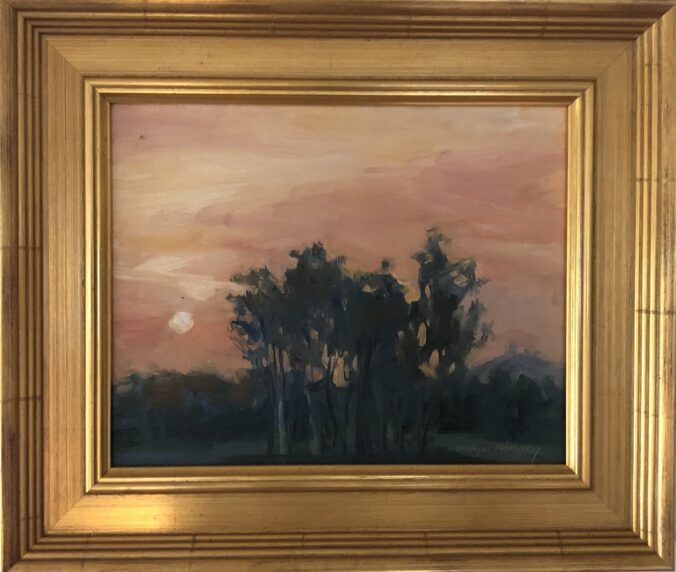I said recently that I hadn’t had a choice about spending time in an ashram. It was a surprising thing to say, but it was accurate. Of course, you always do have a choice, but there are times when one option is so obviously what you need that you know it would be irresponsible to choose anything else.
Why was this so? I had been consciously “working on myself” for five or six years by the time this option arose. I had begun noticing, for instance, that when people around me seemed to be angry, I ought to look at what I was doing to make them angry. I might be smiling and speaking sweetly, but what was going through my mind? What did I really feel underneath my smile?
So, I was beginning to take responsibility for what happened around me, identifying the cues that all was not as it should be, being honest with myself about my feelings, and letting go of some deep-rooted negativity. It was slow-going, but there had been a little progress.
I have known people who seem to have no understanding of this kind of inner work. Someone once told me that there are two types of people in the world: those who felt safe and happy as children and those who felt afraid. “These two kinds of people can never understand each other,” my friend said. “It’s as if they were living in two different worlds.”
There is truth to this, though I can see now that it’s a question of degree. Most people experienced some fear growing up. I definitely did, and more than a little.
So, there I was, in my late twenties, trying to overcome the omissions of my childhood in a step-by-step manner—talking things over with a psychologist, participating in weekend workshops and what we called sensitivity groups. As I’ve said, it was slow going.
When I encountered the miracle of enlivened meditation and extended periods of namasankirtana—chanting the divine name!—under the auspices of a living saint, it was as if I had died and gone to heaven. I was experiencing and letting go of dreck in my mind so quickly and thoroughly that it felt like magic. It wasn’t actually magic; it was a subtle science of mental and emotional cleansing—with, fortunately, the hardest parts saved for later.
The main point was being in the presence of someone who was himself beyond the various pulls of the mind, someone anchored in a state of love. And how did I know he was? Because I could feel that love. Around my teacher, the love was palpable. It was as if the air itself developed texture; it was as if time slowed; it was as if everything I felt came suddenly to the surface of my being—apparent to me and, I knew, to my guru as well. I trusted that he knew precisely who and what I was, and, still, I could feel love radiating from him. It wasn’t that he loved me; he was love; he was in a state of unconditional love.
It was the most efficacious method of working on myself that I had ever encountered. So, even though following this path meant leaving home, even though it took a fulltime focus, it was what I needed to do. I saw it as a form of training, as a way of investing in myself. I was working with a spiritual master.
I was not, of course, alone in this. I was one of thousands. I have no idea just how many we were, but our numbers were legion, and we came from many different cultures, from all different parts of the world. At one point, years after my initiation, I was in charge of an oral history project, collecting stories from those who had played various roles in this worldwide phenomenon. For some time, I worked on these interviews with a man from South India—which is the area where my guru and his own guru had both been born and reared and which, therefore, was a place where this spiritual path had, at least in part, originated.
One day this man, Sudhakar Mavilapalli, told me that he couldn’t relate to the way Westerners—meaning Americans and Europeans—spoke about our shared spiritual path in their interviews. “They talk about letting go of their anger,” he said. “They talk about becoming more kind. What difference does any of that make? They’re just talking about changes in their personality. It’s all so superficial.”
This surprised me. I asked Sudhakar to tell me how he viewed his own spiritual work. How had he changed after decades of sadhana?
He thought about this for a moment, and then he said, “I would say that over the years my commitment to the path has deepened.”
Commitment? I suppose that’s one way of saying that you don’t really have a choice but to be on the path. So, perhaps my commitment was deep from the very beginning. I did think of sadhana then as a way I could deal with my difficult personality, but I have to say that now I think Sudhakar was onto something. I don’t care so much about my personality anymore. Most of the time I know that I mean well, and that’s what matters to me. “Meaning well” has to do with my commitment to reach for the source of love within myself, however I can touch that love in the moment.
I’m not still living in the presence of a spiritual master, but I do have ways of reaching for inner love that were shown to me on this path. As a friend on the path once said to me, “I have experiences of ecstasy—of real bliss—every day.” As do I. It is utterly fulfilling, and I am so grateful now that I have always felt the need to do this inner work.



Maha, this writing moved me to experience again the enormous gratitude that is alive in me that I was also fortunate to discover this spiritual path.
I always remember a friend saying to me in my twenties, “You’re always looking for the answer to the meaning of life”.
I hadn’t realized this was something different about myself – I thought this was what everyone was doing! My search was fruitful: Meeting my spiritual master and experiencing profound love and joy gave me an immediate glimpse of the purpose of my life. Living has become immeasurably enriched over the years through studying the ancient teachings and practices that reveal the true nature of this universe.
Now I too live a life fully engaged with the world. It’s a balancing act to remember this knowledge, and find ways to keep my passion and longing alive. I remind myself to make the effort to reach for the inner love and joy. I believe that my commitment has also deepened – I have an ever more clear understanding of the value of my experiences and transformation, and what is most important.
Thank you, Judy, for responding so personally, and graciously, to my attempts to articulate what is, truly, indescribable.
Maha, this exposition landed deeply with me. I am thinking of mumukshutva, the intense longing for liberation that gives me no choice but to follow its guidance. The urge that becomes a response of “good” in response to “how are you?”. And how it all began with a moment of grace that has continued to expand in my awareness and gives me a commitment to the process. I found chanting the mantra very dry when I started on my path and yet, perhaps due to my commitment, it soon established roots and grew to be a part of me, a part that now sustains my commitment. I am deeply grateful for your words that help me to be more aware of this lack of choice in my own life.